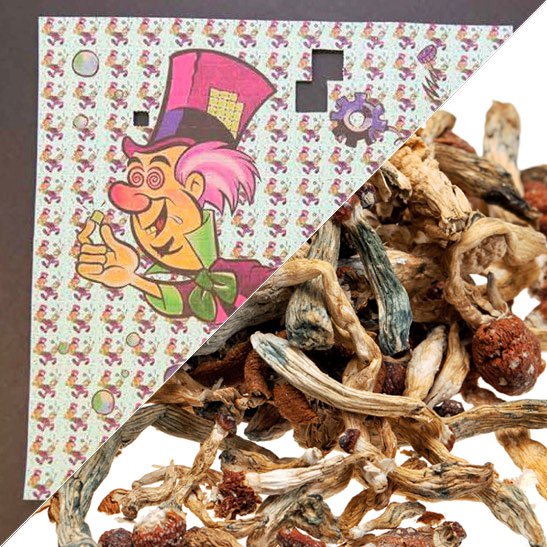Why the Value of Studying Psychotomimetic Phantasm Can not Be Overemphasized
The research of psychotomimetic sensations presents a special possibility to discover the detailed connection between modified states of awareness and the neurobiological bases of psychological disorders. By investigating these experiences, researchers can untangle important insights into neurotransmitter functions and their implications for mental wellness therapy. This expedition not only improves our understanding of psychosis however additionally leads the way for ingenious healing techniques. Yet, the ramifications get to much beyond mere treatment; they test our fundamental assumptions of consciousness itself, motivating further questions into what it suggests to experience truth.
Definition of Psychotomimetic Phenomena
Specifying psychotomimetic sensations needs an understanding of their complicated and diverse nature. These phenomena refer to experiences that mimic the symptoms of psychosis, including hallucinations, misconceptions, and altered understandings of truth. Psychotomimetic effects can be generated by numerous materials, such as certain hallucinogens, stimulants, and even some pharmaceuticals, bring about significant ramifications for both scientific and study contexts.
The term "psychotomimetic" itself highlights the capacity of these materials to generate altered psychological states looking like psychotic disorders, which can complicate the differential diagnosis and treatment of psychological conditions. Importantly, such sensations are not restricted to drug-induced experiences; they can additionally arise in non-substance-related contexts, including extreme tension or sleep deprival, further highlighting their complex nature.
Comprehending psychotomimetic sensations includes the exam of their neurobiological bases, emotional impacts, and sociocultural measurements. This extensive approach is crucial to untangle the complexities surrounding these experiences and their importance in both healing and non-therapeutic setups (About Golden Psycho). By exploring the definition of psychotomimetic phenomena, researchers and medical professionals can much better value the implications for mental wellness and the possible pathways for future investigation and treatment
Historic Context and Study
The exploration of psychotomimetic phenomena has an abundant historic context that covers both old and modern times. In ancient societies, materials such as peyote, ayahuasca, and psilocybin mushrooms were utilized in spiritual rituals, often resulting in altered states of consciousness considered as pathways to divine insight. These techniques prepared for understanding the impacts of copyright substances on the human mind.

In the 19th and early 20th centuries, scientific query right into psychotomimetic experiences obtained momentum. Scientists like Sigmund Freud and Carl Jung explored the emotional effects of modified states, while the exploration of LSD in the 1930s catalyzed a wave of rate of interest in psychotomimetic substances. This period saw a merging of psychiatric research and recreational usage, motivating studies on the restorative capacity of these materials.
However, the counterculture activity of the 1960s, coupled with regulative suppressions, stymied research for decades. Recently, a renaissance in psychopharmacology has actually emerged, with restored emphasis on the restorative applications of psychotomimetic agents in dealing with psychological health and wellness conditions. This historical trajectory emphasizes the relevance of studying psychotomimetic sensations within both scientific and social frameworks.
Insights Into Mental Wellness
Recent researches have progressively highlighted the potential of psychotomimetic materials in supplying useful understandings into psychological wellness. These substances, which can generate alterations in understanding, state of mind, and cognition, have actually been important in clarifying the devices underlying various psychological disorders. By examining the impacts of these compounds, scientists have obtained a deeper understanding of the neurobiological paths connected with problems such as schizophrenia, depression, and stress and anxiety.
For example, the management of psychotomimetic representatives has been shown to resemble particular signs of psychosis, allowing for the expedition of natural chemical systems read this article included in these experiences. This study has disclosed the considerable function of serotonin and dopamine in mood policy and psychotic signs, possibly guiding more targeted therapeutic treatments. Furthermore, making use of these materials in regulated settings has actually supplied an unique chance to check out altered states of awareness, which may parallel specific mental health problems.
Furthermore, understandings got from psychotomimetic research study are paving the way for novel therapy approaches. copyright-assisted therapy, for instance, has emerged as an appealing avenue for addressing treatment-resistant conditions, highlighting the importance of these substances ahead of time our understanding of mental health.
Effects for Awareness Researches
Researching psychotomimetic sensations not just improves our understanding of mental wellness problems however additionally uses considerable insights into the nature of consciousness itself. These sensations, which usually stimulate transformed states of assumption and cognition, supply an unique home window right into the systems underlying conscious experience. By exploring how compounds generate experiences reminiscent of psychosis, researchers can much better recognize the boundaries of typical and uncommon consciousness.
Moreover, psychotomimetic experiences challenge traditional sights of consciousness by exposing its complex nature. They suggest that consciousness is not a fixed entity but rather a hop over to these guys vibrant interaction of cognitive processes, sensory input, and subjective experience. This has profound ramifications for concepts of consciousness, pushing scholars to reconsider the functions of neurochemistry and subjective experience fit understanding.
Additionally, exploring exactly how people react to psychotomimetic representatives can light up the partnership in between consciousness and self-awareness. Understanding how these compounds change one's feeling of self and fact might educate philosophical arguments regarding the nature of consciousness and identity. Inevitably, the research of psychotomimetic sensations stands as an essential avenue for advancing our comprehension of consciousness, inviting more interdisciplinary expedition and dialogue.

Future Instructions in Research Study
Exploration of psychotomimetic phenomena is poised to broaden in numerous promising instructions that might grow our understanding of consciousness and psychological health. About Golden Psycho. One considerable method for future research includes the neurobiological mechanisms underlying psychotomimetic experiences. Advanced neuroimaging techniques can clarify the brain's action to numerous psychotomimetics, offering insights into modified states of awareness
Additionally, interdisciplinary approaches that incorporate psychology, pharmacology, and neuroscience might yield a detailed framework for comprehending the therapeutic possibility of psychotomimetic compounds. Controlled professional trials exploring their efficacy in dealing with mental wellness conditions, such More about the author as depression, anxiousness, and PTSD, might provide durable evidence sustaining their energy in restorative settings.
In addition, the assessment of cultural and contextual aspects influencing psychotomimetic experiences warrants further examination. Comprehending how various cultural histories shape specific actions can enhance the application of these materials in varied populations.
Verdict
In conclusion, the research study of psychotomimetic phenomena plays an essential role in advancing the understanding of consciousness and psychological disorders. By elucidating the neurobiological systems underlying psychosis, these materials offer crucial insights that improve diagnostic and restorative techniques.